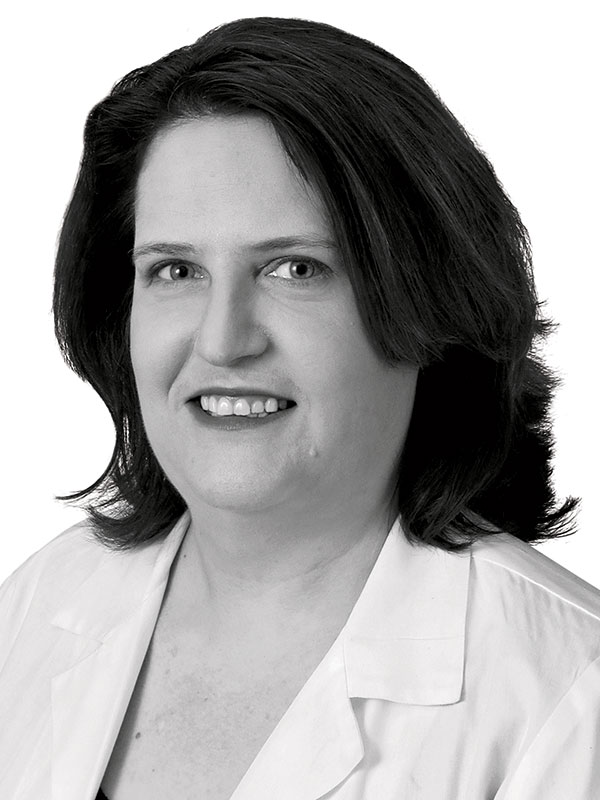
The Cancer Dismantler
Hedy Kindler, an oncologist at UChicago Medicine, may have found the Achilles’ heel of pancreatic cancer. The drug olaparib is given to breast and ovarian cancer patients who have mutations in the BRCA1 and BRCA2 genes because it targets cells with those variations. Those same mutations also increase the risk of pancreatic cancer, so Kindler wondered: Could olaparib work for that disease, too?
Last June, she published results showing that the drug slowed the progression of pancreatic cancer in patients with the mutations by a median of two years — “an incredibly long time,” says Kindler, given that the typical survival rate is less than a year.
Though only 4 to 7 percent of patients with pancreatic cancer have the mutations, she says it’s a “paradigm shift” in the treatment of the disease, which is projected to become the second-leading cause of cancer death in the United States sometime this year. Doctors now screen newly diagnosed patients for BRCA1 and BRCA2, and Kindler’s discovery is encouraging researchers to look into other molecular markers.

The Purification Solution
Limiting ultrafine pollution particles from indoor sources is just as important to good health as curtailing emissions from large-scale polluters, according to a paper published in March by Dean Schraufnagel, a pulmonologist at UI Health.
More than lung health is at stake. “Air pollution is a problem for all organ systems and an important factor in all diseases — dementia, diabetes, stroke, heart disease,” Schraufnagel says about the conclusions of the paper, which was a follow-up to a sweeping review he completed with other respiratory experts last year.
A week after Ireland enacted an indoor smoking ban in 2004, deaths dropped by 13 percent, mostly related to decreases in the severity of chronic obstructive pulmonary disease, heart disease, and stroke. The use of cleaner methods to heat homes, like a gas heater with a flue, reduced asthma attacks in children, as well as days absent from school, after less than a month.
“It’s striking — the quickness of it,” says Schraufnagel. “It was in the literature, but I don’t think people realized the extent of the benefit.”

The Memory Gene
Breakthroughs in Alzheimer’s research don’t typically come from endocrinologists. But in 2018, while looking into why treatment for hypothyroidism wasn’t working for some patients, Elizabeth McAninch and her team at Rush University Medical Center decided to start from scratch — and made a curious discovery.
They analyzed brain samples from organ donors who had a genetic variation affecting the activation of thyroid hormones. All of these donors were young and healthy at death; none showed signs of neurodegenerative disease. However, in sifting through the patients’ DNA sequencing, McAninch’s team noticed cellular and genetic changes linked with Alzheimer’s. “This tells us that the genetic variation may be one of the underlying mechanisms behind neurodegenerative diseases,” says McAninch. Her team also found that African Americans with this variation had an even higher risk than white Americans.
In finding this correlation, McAninch was left with more questions. Is this variation contributing to the development of Alzheimer’s? If so, can it give clues as to how to prevent it? She hopes to find out.

The Smart Stethoscope
“This is the death of the stethoscope,” says Patrick McCarthy, who leads Northwestern Medicine’s Bluhm Cardiovascular Institute. His team, working with Berkeley, California-based EKO Technologies, has given the instrument a top-to-tip makeover by using artificial intelligence to not just listen to heartbeats but also analyze them, detecting conditions like murmurs with 95 percent accuracy.
In a version called the EKO Core, the upgrades are packed into a tool that looks like a normal stethoscope. The EKO Duo, which also includes electrocardiogram capabilities (minus the stickers and cords), resembles a modernized Star Trek tricorder and functions somewhat like one too, transmitting data to a smartphone for analysis (as does the EKO Core).
And there’s another benefit. By allowing nonspecialists to listen to and image the heart, the devices will make these services more accessible in underserved communities and, eventually, patients’ homes. “With COVID-19, there’s this huge push toward telehealth,” says McCarthy. “We’re not there yet, but it’ll be a whole different world.”


